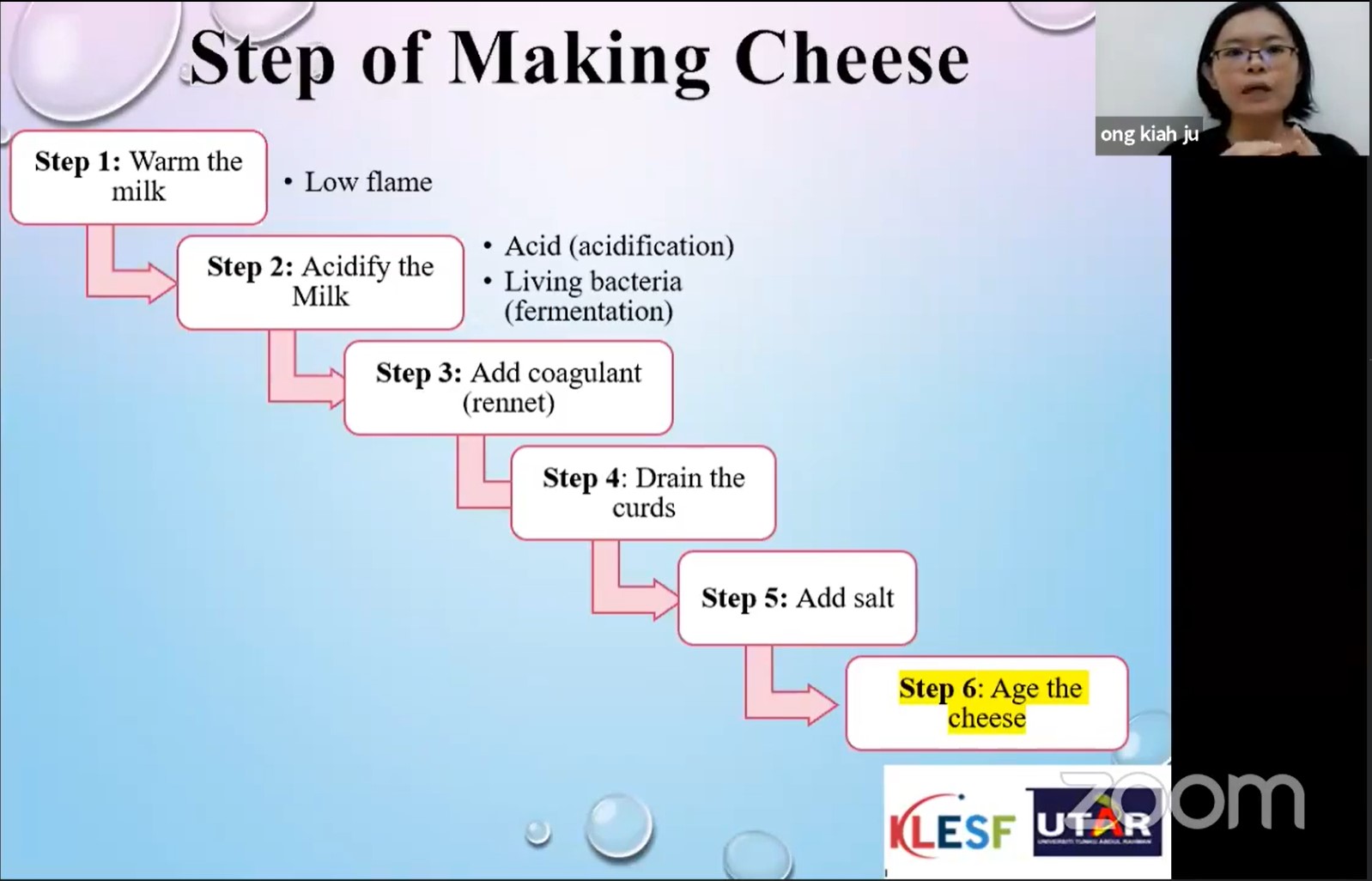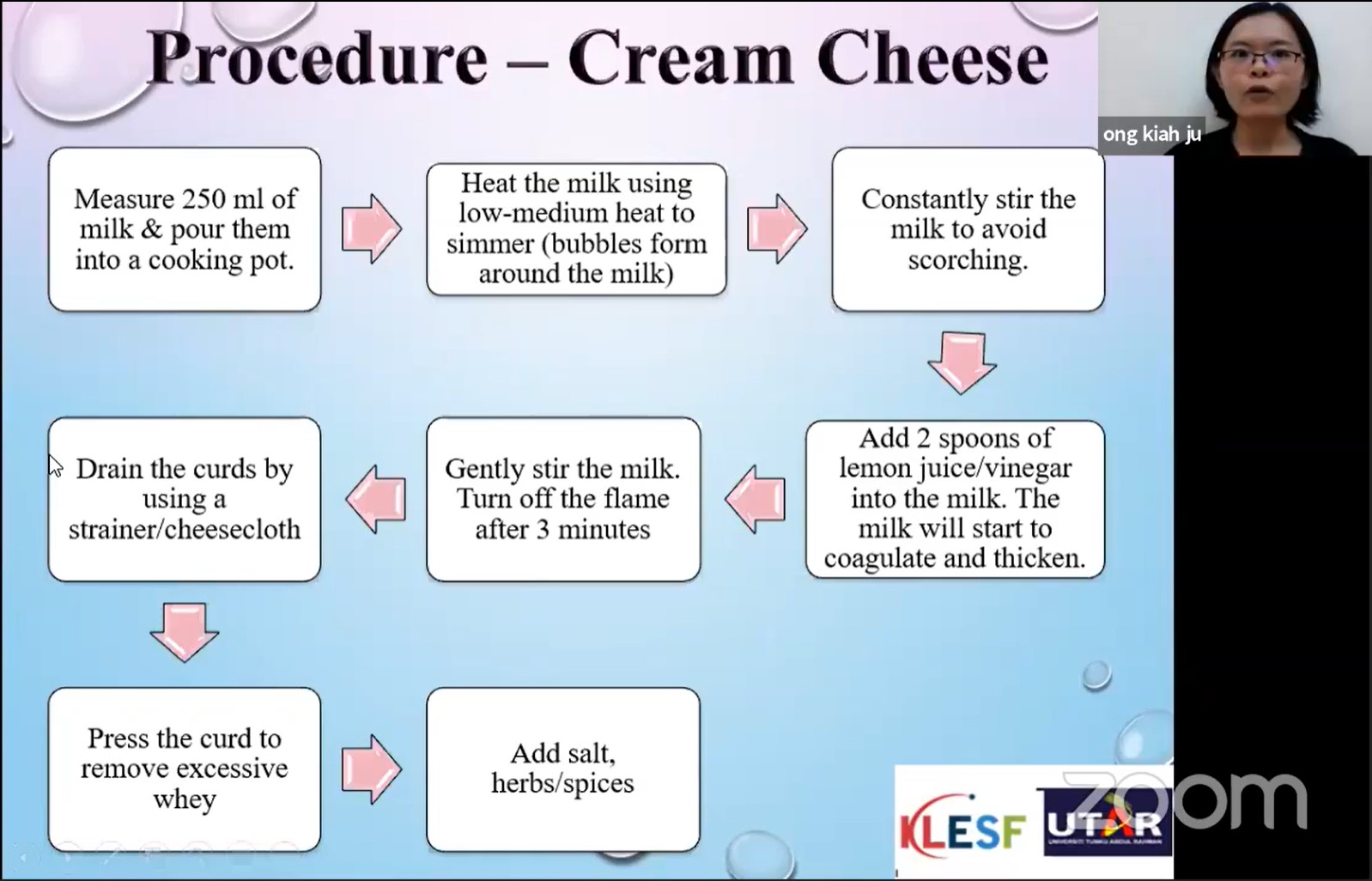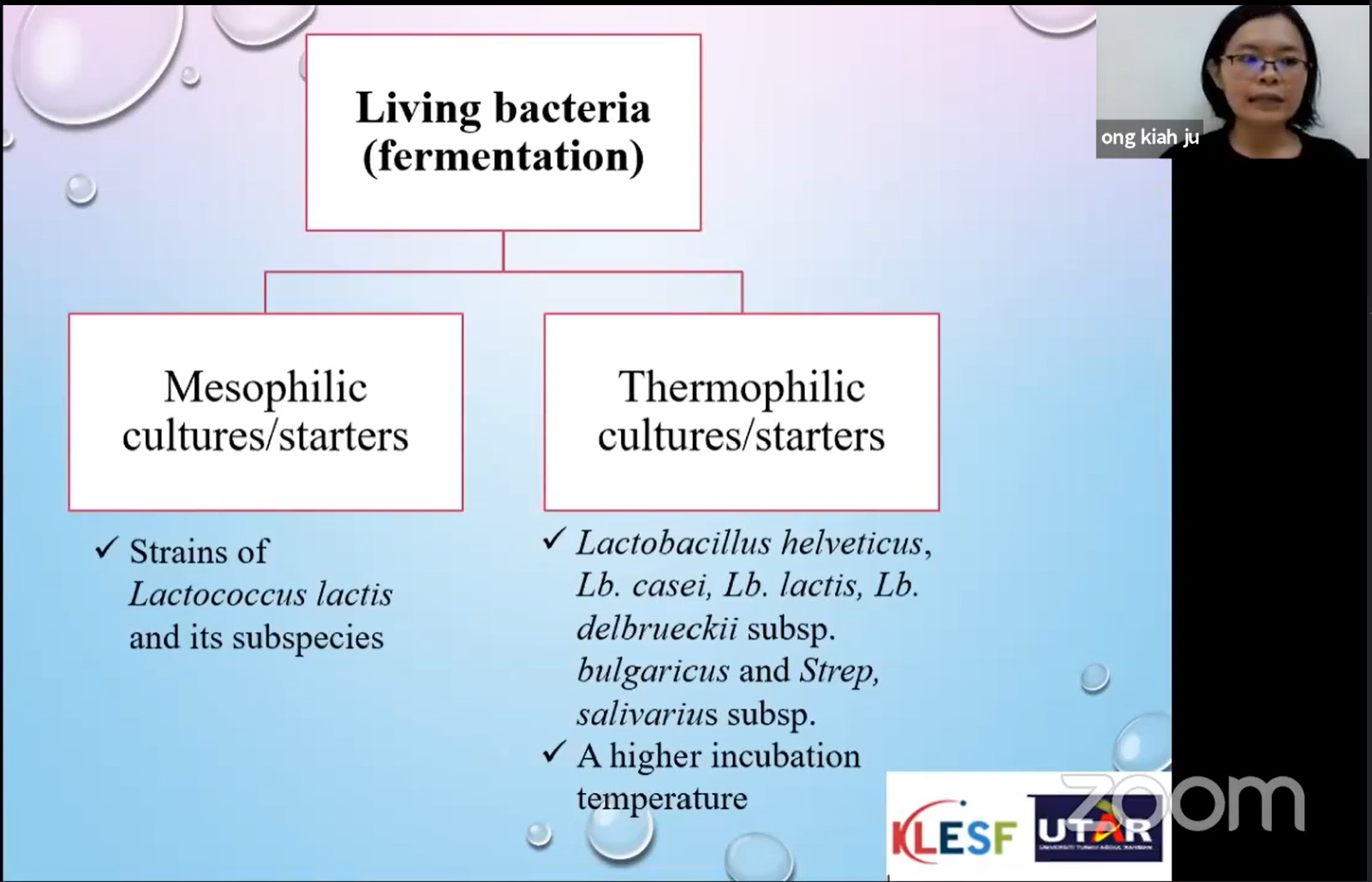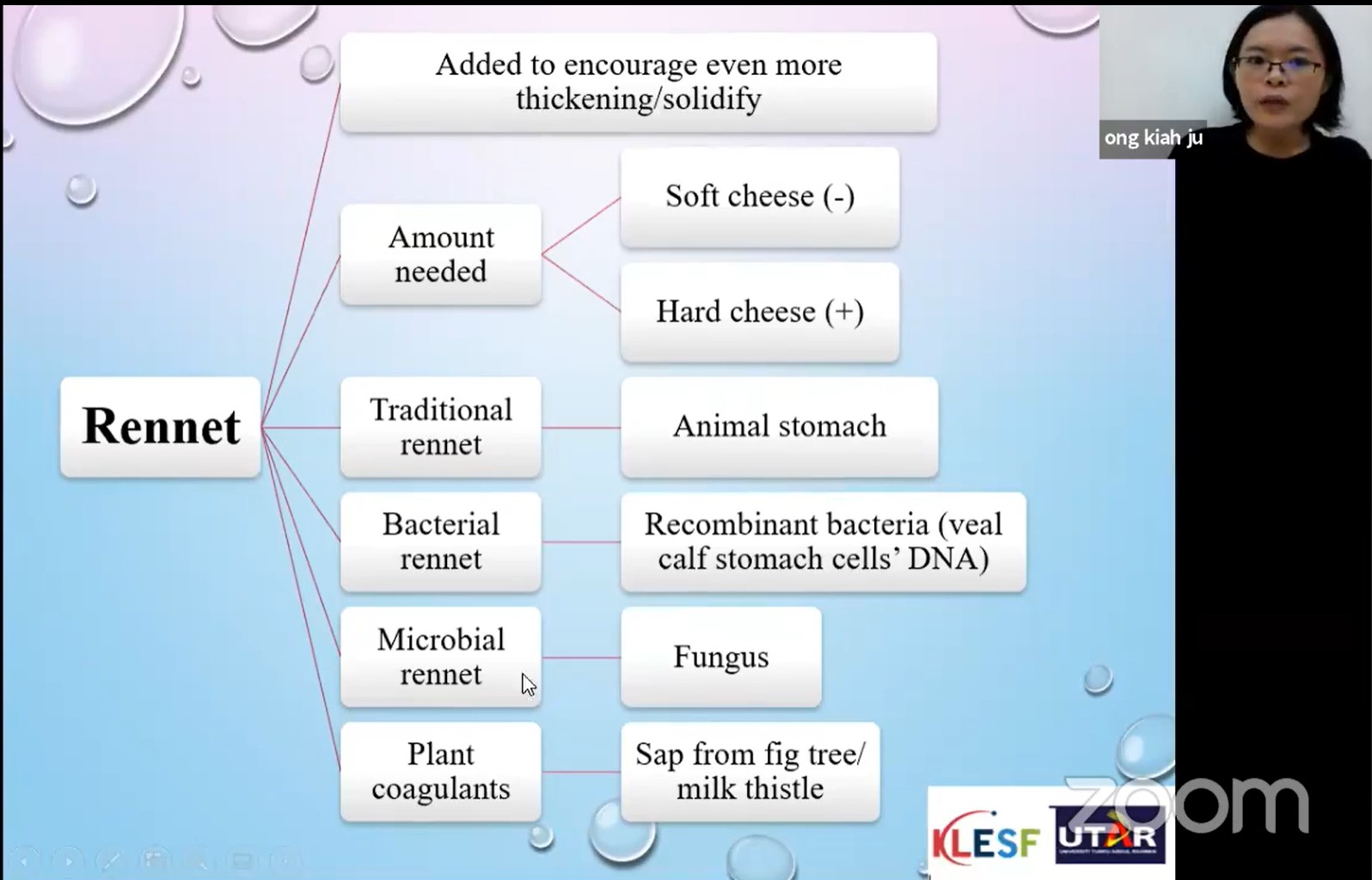
Another webinar conducted at the e-KLESF was “How to make your own cheese” on 16 December 2020 which was hosted at Zoom and shared through Facebook. Speaking at the webinar was UTAR Centre for Foundation Studies of Sungai Long Campus Dr Ong Kiah Ju.

Dr Ong greeting the
participants
Through the webinar, Dr Ong taught
the participants about the basic principles of cheese making and discovering
the possibility of making cheese at home. Aside from that, Dr Ong explained
the benefits and risk of consuming cheese. She said, “Cheese is a
nutrient-dense food which contains protein, calcium and vitamins. Cheese
also has been shown to prevent dental caries and promote weight reduction
while having anti-hypertensive properties and anti-carcinogenic effects.
However, some people may have an allergy to casein; thus, they cannot
consume cheese. Some cheese may contain high saturated fat and sodium thus,
consuming more will contribute to cardiovascular disease and higher blood
pressure. People who are lactose intolerant cannot digest the lactose thus,
consuming cheese that did not undergo fermentation would cause stomach
discomfort.”
Dr Ong started the webinar with an
introduction to the history of cheese making dated back more than 4,000
years ago. “Cheese is curd of milk solids from cow, goat, or sheep milk. The
main ingredients needed are milk, acid derived from lemon juice or vinegar
or bacteria cultures. Normally, unpasteurised milk has a better flavour. The
milk must be free from antibiotics as the antibiotics interfere with the
fermentation process,” said Dr Ong.


Dr Ong explaining
the steps of making cheese
There are two types of cheese,
namely young cheese and aged cheese. “The young cheese such as cream cheese,
mascarpone, mozzarella, ricotta can be prepared in a shorter time. It can be
consumed after the whey is drained while aged cheese such as cheddar, blue
cheese, parmesan needs longer preparation time, aging process. Usually, it
will be kept for months before it can be consumed,” added Dr Ong.
Dr Ong also taught the
participants the types of bacteria culture and how lactic acid is formed as
well as the composition of milk. “Milk is made out of protein, lactose, fat,
calcium and vitamins as well as other minerals. It is important to acidify
the milk so the milk will form curd. Protein is a huge molecule known as a
macromolecule made out of amino acids.


![]()
Wholly owned by UTAR Education Foundation Co. No. 578227-M LEGAL STATEMENT TERM OF USAGE PRIVACY NOTICE